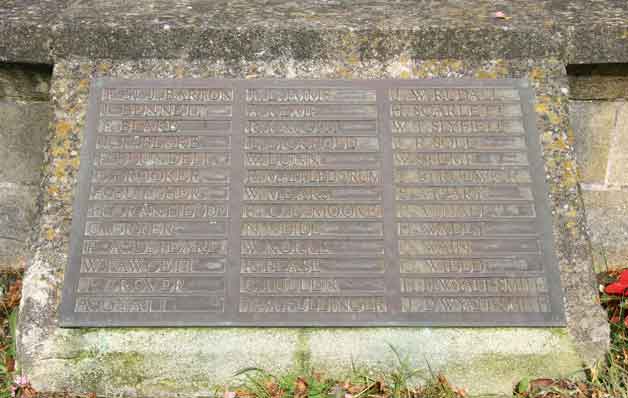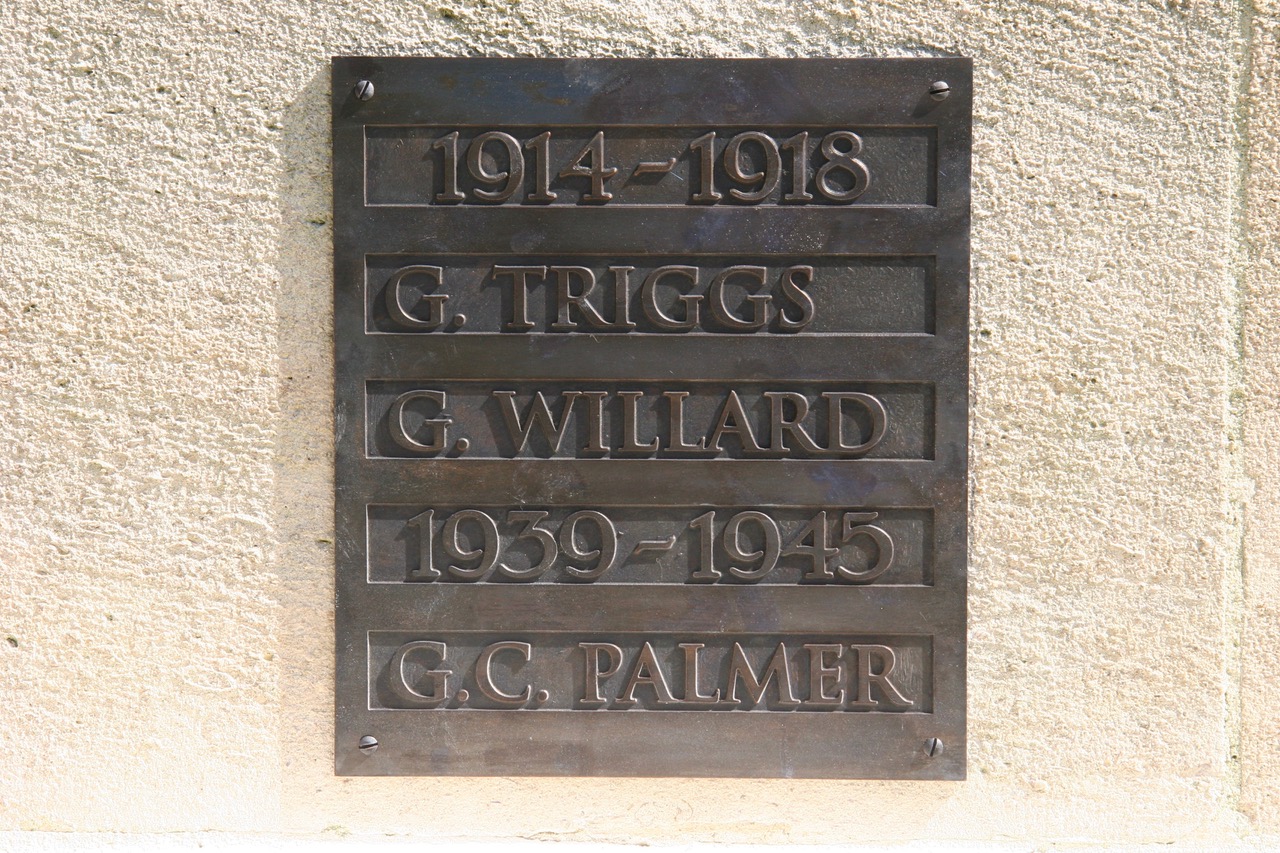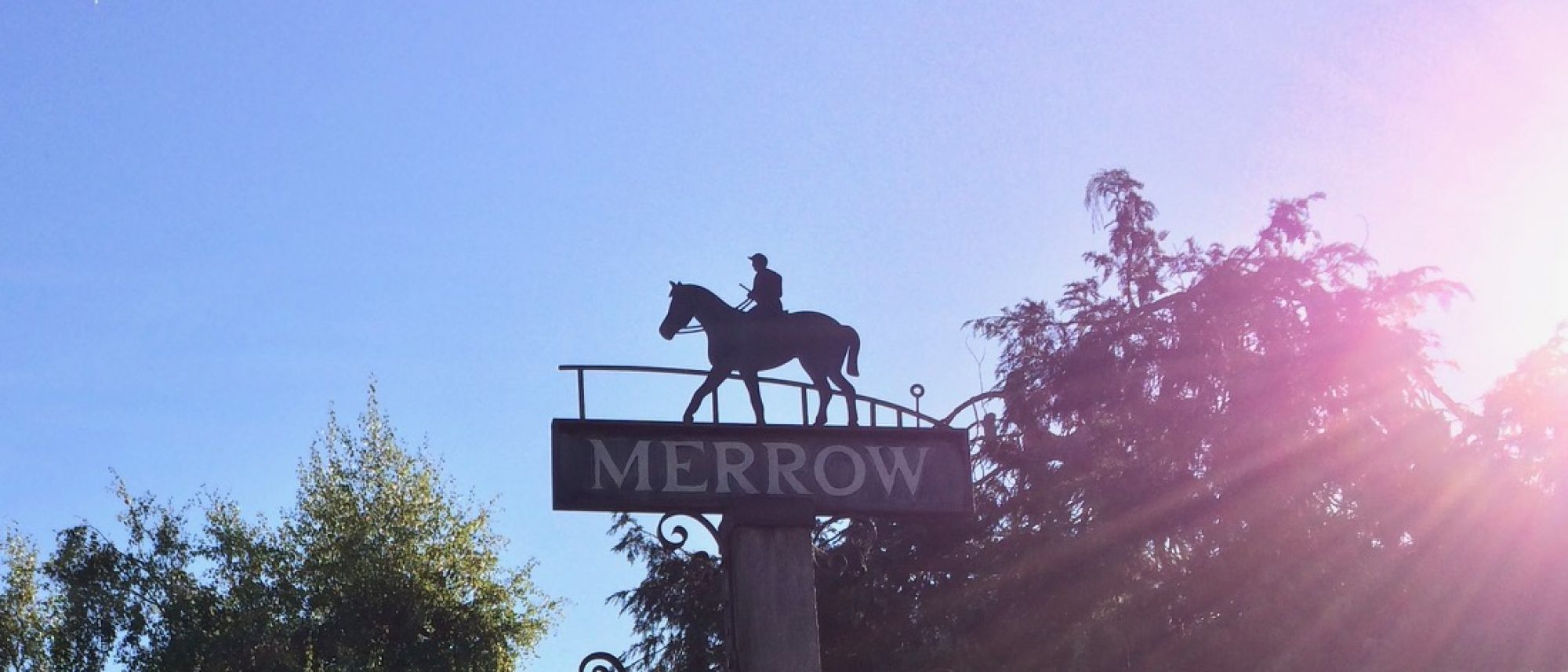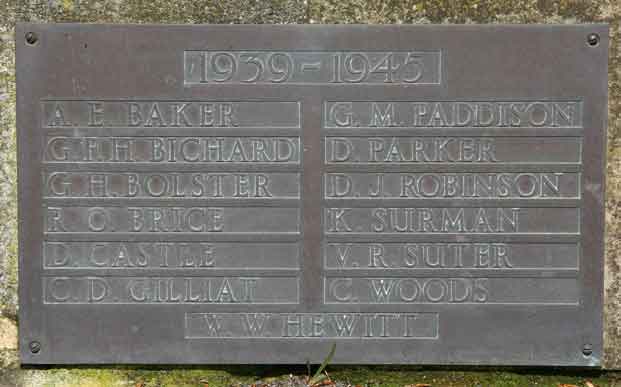EACH ONE, MAN FOR MAN,
has won imperishable praise.
Each has gained a glorious grave.
Not that sepulchre of earth wherein they lie,
but the living tomb of everlasting remembrance
wherein their glory is enshrined.
For the whole earth is the sepulchre of heroes;
monuments may rise and
tablets be set up to them in their own land,
but on the far-off shores is an abiding memorial
that no pen or chisel has traced.
It is graven, not on stone or brass,
but on the heart of humanity.
Take these men for your example.
Like them, remember that prosperity can
only be for the free; that freedom
is the sure possession of those alone
who have the courage to defend it.
Funeral Oration spoken by Pericles, 429BC
Introduction
An editorial in the ‘Surrey Advertiser’ for 28th December, 1918 noted that ‘in several towns and villages in Surrey steps have been taken to provide local war memorials ….. The dangers we have passed through have been greater than ever experienced by the British nation and Empire. The sacrifices we have been called to make have been without parallel. The heroism and endurance by those who have won the victory have never been surpassed. Whatever memorials are erected should be worthy of the events they commemorate; they should so far as may be possible be permanent in character ….. and they should be really and truly commemorative, bearing upon them in some conspicuous place a simple record of the local contribution to the national effort, together with the names of the men who have made the supreme sacrifice’.
The Merrow village war memorial was unveiled by General Lord Rawlinson on the Friday evening of 20th July, 1920 and dedicated by Bishop Hose, formerly of Singapore. General Rawlinson commanded the Fourth Army, comprising five Corps, for much of the war including at the battle of the Somme in 1916. The Fourth Army was at the centre of the final offensive of the war and is attributed to have been the most effective force in that offensive. General Rawlinson is also recorded as having been Field Marshal Haig’s best army commander and tactician. The memorial bears the inscription ‘This cross was erected by the people of Merrow in memory of the men of the village, who, in the Great War, 1914-1918, laid down their lives for their King and country, in the cause of justice and humanity’. In his speech at the unveiling, General Lord Rawlinson said that ‘it was a great gratification to all soldiers to see in a local churchyard like that so admirable a monument erected to the memory of those who died for their fellows’.
At the foot of the cross are three bronze plaques. The first plaque records the names of those who died in the First World War, the second plaque records the names of those who died in the Second World War and the third plaque records the names of those who were mistakenly not included when the first two plaques were manufactured. The names of those commemorated on the memorial are:
First World War.

Click for high res.
| F. St. J. Barton | T. L. Imms | J. W. Rudall |
| I. P. W. Bennett | A. C. Kemp | H. Scarlett |
| F. Blake | A. R. Knight | W. T. Slyfield |
| J. T. Blake | L. Lickfold | J. R. Sole |
| F. B. G. Blundell | W. H. Lunn | W. Stemp |
| C. Brooker | F. J. Mappledorum | T. Strudwick |
| A. Butcher | W. Mears | S. Vicary |
| C. W. Cranfield | S. C. L. Moore | S. Vinall |
| G. Cryer | N. Neill | H. Wadey |
| P. A. De Peare | W. F. Norris | G. Wain |
| W. Fawcett | R. H. P. Pease | C. G. Wield |
| J. Grover | C. Pullen | H. H. Wyatt-Smith |
| A. Gyatt | T. A. Pullinger | J. D. Wyatt-Smith |
Second World War.
| A. E. Baker | G. M. Paddison |
| G. F. H. Bichard | D. Parker |
| G. H. Bolster | D. J. Robinson |
| R. O. Brice | K. Surman |
| D. Castle | V. R. Suter |
| C. D. Gilliat | C. Woods |
Third Plaque
Please visit the Commonwealth War Graves Commission for more information. CWGC
Restoration of the War Memorial
Unfortunately, the passage of 80 years caused considerable structural damage to the memorial and it was realised that the memorial would have to be dismantled to carry out effective repairs. The wisdom of dismantling the memorial became evident when it revealed a meagre foundation, the interior backfilled with rubble and tree roots growing inside the memorial. The restoration was carried out by Return to Stone (UK) with Mr Kevin Newell being in charge of day to day work.
The cost of the restoration was around £18,000 and, while a significant amount was raised by donations from individuals and local organisations, additional grants were received from the Heritage Lottery Fund, administered by the Countryside Agency’s Local Heritage Initiative and supported by the Nationwide Building Society, Guildford Borough Council, the Queen’s Royal Surrey Regiment Association and the Friends of War Memorials.
Re-dedication of the War Memorial
 |
 |
 |
 |
The memorial was re-dedicated at an ecumenical service on Sunday afternoon, 12th May, 2002 by The Right Reverend John Kirkham, former Bishop of Sherborne and former Bishop to the Forces. The clergy of all the Merrow churches took part. Almost 200 people attended the service including Mrs Sue Doughty, MP for Guildford, Councillor Tony Phillips, mayor of Guildford, representatives of the Royal British Legion and the three Services and relatives of those who died in the two world wars. The standards of the Royal British Legion and the three Services were paraded.
After the church service that included a moving and inspirational address by Bishop Kirkham, the clergy, choir and congregation proceeded in warm sunshine to the memorial. The choir sang the Easter Anthems prior to the reading of the names of those who had died, the exhortation and the laying of wreaths. The sounding of The Last Post, the two minutes silence and The Reveille was followed by the dedication, a particularly emotional part of the service, and the service was concluded with a prayer and blessing.
Following the dedication a reception was held in St John’s Church Centre where a display of medals, photographs and narratives relating to Merrow in the two world wars attracted much attention. Large scale maps of Merrow as it existed in 1914 and 1934, showing individual houses, also provided a telling picture of the scale of the sacrifice by the men of Merrow. The population of Merrow during the period 1914-1918 was around 2,000. If a very general assumption is made that half the population was female, one third were over the age for conscription and one third were under age, the conclusion can be drawn that approximately 330 were of fighting age. With 41 being killed or dying as a result of their active service, the casualty rate for deaths amongst those on active service may have been very roughly one in eight and undoubtedly a number of those who survived were in some way injured.
The loss of life amongst Merrow Servicemen and Servicewomen during the Second World War was much less, with thirteen men being killed or dying as a result of their active service. For that we must be grateful but at the same time we need to remember the constant anxiety of those left behind as to whether or not their loved ones were alive or dead or whether they would survive until the war was over. Communication by letter with different parts of the world was difficult and it could be months before families had news of those fighting in the various theatres of war.
As part of the restoration project local residents researched the names on the memorial, about whom very little was known, and some of the large amount of material collected was included in a Book of Remembrance, copies of which are held by the successor to the Countryside Agency, The Surrey History Centre in Woking, the Guildford museum and St John’s Church Centre. Apart from some background to the individuals and a narrative of the circumstances of each death, the book contains copies from Operational Record Books, maps of some of the campaigns and a number of photographs.
A special Book of Remembrance is held in St John’s church. The book is leather bound with a page for each individual whose name appears on the war memorial. Each page has an illuminated badge showing the Service or regiment of the individual together with further details of unit, age, date of death and place of burial (if known) and the memorial on which the individual is commemorated. The pages in the book are turned at regular individuals with the page being held by a leather and brass bound marker inscribed with the words ‘We will remember them’. It is certainly worth looking at when visiting the church.
Maintenance of the War Memorial
The war memorial has now been standing for almost 90 years and the restoration showed how badly the stonework has been affected by the passing years. The deterioration has been partly due to the fact that the memorial is situated close to a number of mature trees and also to its exposure to the increasingly polluted atmosphere. Unfortunately, those who chose the type of stone for the memorial probably gave little thought to how it might survive for 100 years and the legacy is a memorial that now requires regular cleaning if it is to survive for another 100 years.
The cleaning process used for the restoration of the memorial produced an outstanding result. However, it is a complex treatment largely due to the presence of black algae. While green algae can be removed relatively easily, the black algae penetrates the stonework and is a prime contributor to the deterioration of the surface of the stone. Nevertheless, the total process cannot act as a permanent barrier to algae and other pollution damage which is why periodic re-treatment is necessary to ensure the preservation of the memorial.
The recommended treatment, to be carried out every 4-5 years, consists of the following stages.
a. Erection of temporary scaffolding to give access to the cross and shaft.
b. Provision of debris netting for the scaffolding during the work.
c. Gentle washing down of the entire surface of the memorial using a nebulous tip spray to remove loose grime and dirt.
d. Application of a masonry biocide to all surfaces of the stonework and allowance of twenty four hours for curing.
e. Removal of biocide using fine spray-jet system.
f. Re-treatment and allowance of a further twenty four hours to fully cure.
g. Re-washing using fine jet-spray system.
h. Final application of a masonry fungicide and give allowance for curing. The residue acts as a barrier to algae and lichen growth.
i. On completion of the work the scaffolding and extraneous materials are removed from the site.
It is inevitable, therefore, that the cost of maintaining the memorial is high. The figure quoted for the cleaning process is around £1,600, a significant proportion of which is due to the need to erect scaffolding. However, having had the memorial restored and at the same time cleaned, it is felt that it would be a sad failure of collective responsibility for the debt we owe to those names commemorated on the memorial if we allowed it to appear as neglected as it did prior to the restoration.
Those responsible for the memorial feel that it would be an appropriate tribute to maintain a fund to meet the periodic cleaning requirement. We are therefore asking for contributions to the fund and any donations would be most gratefully received. All donations would be acknowledged and should be sent to:
Mr A. Neale, OBE,
30, Fairway,
Merrow,
GUILDFORD,
SURREY,
GU1 2XJ
This is the story of how Tom Mabbort (a local resident) organised the third Memorial Plaque to be set onto the war memorial.
“In early 2019, Rev Rona of St John’s Church, Merrow received an email from Irene Triggs (the Grand Daughter of George Triggs). Irene loves to come to our Remembrance Day service and hear her Grandfather’s name read out, but was disappointed that his name wasn’t on the War Memorial. Rona asked me to look into it.
There was plenty of evidence around, it was just a case of setting it out. My sources were, the read out list, the War Memorial itself, the role of honour in the Merrow Village hall, the wooden panels in the Church and the book of remembrance held in the Church. I set all the data I had on a spreadsheet. I married up each of the data sources and it was easy to spot any gaps. George Triggs was my main focus of attention. He was on the read out list, but I also found him in the book of remembrance. I popped down to the Merrow Village hall and they were redecorating so the Role of Honour was in storage. I arranged with the secretary to see the role of honour, and sure enough there was George Triggs- bingo!
But as I examined the spreadsheet more closely I saw that George Willard was in the book of remembrance, the wall panels etc. In fact the only place he wasn’t was the War Memorial. So we needed to put that right.
I nearly overlooked Cyril Palmer. His first name is George, but he seems to have been known as Cyril. On all these matters Tony Neale and Dave Smith were supporting me with information. The only place George Palmer’s name appeared was on the reading list. Until Dave found him as being buried in St John’s graveyard. A very quick bit of research in the graveyard map in the Parish Office and I found his Gravestone.
I thought that was it. All research completed, now for the updating of the War Memorial. Well, this has been the most difficult bit for me. First a disagreement between the Guildford Borough Council planning department and the Diocesan Advisory Committee (DAC). The planning department felt we needed planning permission as it is a grade 2 listed structure. The DAC felt it needed faculty to amend the War Memorial. It was finally agreed that a faculty would suffice.
Nearly there? No unfortunately a member of DAC staff was on long term sickness. With no back up it meant we had to wait a long time to get the faculty granted. Getting a new plaque (in keeping with the existing plaque), was another challenge. Many businesses were approached and many did not respond to my enquiries, that is until Lodge Bros arranged for the plaque to be produced. Finally the plaque is in place. And I would like to thank a number of people, Dave Smith & Keith Meldrum of the MRA for their back-up, research and fund raising. Rev Rona for granting permission to go ahead with the query, Helen Chambers for patiently applying for the faculty, Irene Dredge for raising the query and fund raising to pay for the plaque, Tony Neale for his support and record keeping. And of course Lodge Bros for arranging creation of the plaque. I’m sure I have forgotten some people, so I hope they will forgive me.
At last George Triggs, George Willard and Cyril Palmer are rightly honoured on the Merrow War Memorial.
Best wishes
Tom”
25 August 2019

